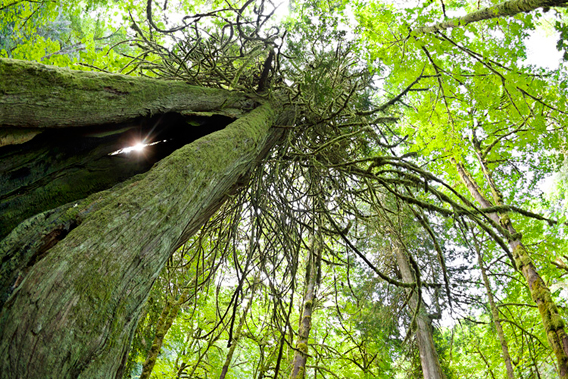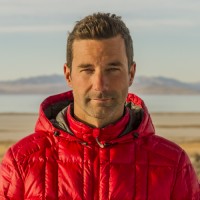
The Finnish have a word—Sisu, which literally translates to “Having Guts.”
But it cannot be translated without understanding its cultural value. It sits at the core of their spirit and has, for hundreds of years, defined who they are and what they strive for. On Finlandia University’s website, a page is dedicated to explaining it:
“Sisu is not momentary courage, but the ability to sustain that courage. It is a word that cannot be fully translated. It defines the Finnish people and their character. It stands for the philosophy that what must be done will be done, regardless of cost. Sisu is an inherent characteristic of the Finnish people. You might call it backbone, spunk, stamina, guts or drive and perseverance. It is a measure of integrity that surpasses the hardship and sees through to the end.”
In 1962, English poet Lavinia Greenlaw wrote of Sisu:
“To persevere in hope of summer.
To adapt to its broken promise.
To love winter.
To sleep.
To love winter.
To adapt to its broken promise.
To persevere in hope of summer.”
It is 7:00 pm and I have about 30 minutes of light left.
I look down and can’t really see my feet—they are somehow lost under a thick canopy of ferns and branches that I have tightly wrapped around my waist.
I get a glimpse of the red from my hiking shoes only when I lift them up and take a small step forward.
In front of me is a green wall—trees covered by moss and in between shrubs and vines, their branches intertwining with each other so deeply tight that they give the illusion of being only one organism—a living fence!
Every time I see an opening is because a mud pond or a muddy creek is revealed.
Skunk cabbage is blooming and their yellow lanterns are bringing a certain eerie feeling—as if the brightness and contrast of their sunny flowers were to distract from the undeniable reality that this was a maze from where no one escapes.
Two hours before, after visiting the Red Creek Fir tree, the largest Douglas Fir in the world, I discovered that the oil pan under my car had been busted by a rock and that all the oil had leaked out.
There was not a drop left in the engine and although I felt really bad for creating such a disastrous imprint from my visit, my main worry was of a different nature.
I was about 40 kilometers (25 miles) outside of Port Renfrew, a little village with no garage or cell phone coverage where the only gas found was either bought from the marina or from some local guy who sells fuel jars or a 70 km drive (45 miles) to the nearest town.
The road to the tree was a 15 km old logging gravel road that zigzagged through the hills.
Most of it was okay for a car with only a few places where extreme caution had to be taken. I thought I had managed my way through but obviously it only takes one well placed blow to make the kill.
Bled to death, my car was going nowhere unless it was towed.
The situation was not too tragic.
I had food supplies and obviously all my camping gear.
I could camp here and wait for someone to come up, but being in the off tourist season, I was not sure there would be anyone heading this way for days.
The other possibility was to walk back the gravel road. At a walking average of five km/h (three mph) it would take me around three hours to reach the main paved road. The last option was to walk on an abandoned logging road for a mile, cut through the forest and cross the San Juan River where the paved road was nearby.
The distance to the paved road from the abandoned one was only about 1.6 kilometer (just a little over a mile). Because of time and obviously for the short apparent distance, I decided to go with the latter solution—certainly not the safest but I was confident it could be managed.
In case anyone would somehow show up, I left a note on the car explaining the situation. I took one of my medium size Deuter backpacks and filled it with the essentials.
I wanted to be light and quick but also I didn’t really know what was ahead so I had to prepare for the unexpected. The most important was my Delorme InReach.
Together with my iPhone, I knew where I was and where I was going and in case of emergency I could always press the rescue button or send text messages via satellite.
At 5:30 pm, I left the car and started to jog. I needed to cover as much distance as possible while I could. I quickly reached the end of the abandoned road and ahead of me was a little bit of clear cut area with the forest perhaps 50 yards away. The fun was about to begin!
The beginning was your typical new growth forest—sparse trees, shrubs and ferns but as I got closer to the river, the bushes became thicker and the damp soil became swampy. Maneuvering my way through, I got to the river.
At this time of the year, before the spring melt, the San Juan River was relatively low. The flow was still really strong and could easily sweep me off.
Studying the topography I looked for a shallow passage across. The shallowness would increase the strength of the current but would give me more stability. I took my socks and shoes off, rolled up my pants and proceeded.
It didn’t take long for the glacial water to numb my feet and make every step painful. Halfway through, the current was too strong and even though I only had water passed up my knees, my bare feet were too weak to hold a stand.
Every small step demanded all the strength in my legs to hold still. I felt that I was just on the verge of losing my balance. So really slowly I turned around and carefully retreated.
I would have to change my approach. I took my pants off and put my shoes back on. At this stage, I would trade dry feet for a steady foot.
Finding a place a bit deeper I took another shot. The freezing water violently hit my thighs but my mind was in no mood of dealing with the issue, more concerned about keeping myself in control. I was now carrying my backpack on the top of my shoulders with the water past my waist.
Looking ahead, the depth was steady—good! About two meters away the opposite shore, the river took a dip, but lucky enough there was a tree right before that was diverting the current. Now with water mid torso, I quickly covered the remaining short distance and climbed up the bank.
The skin from below my chest all the way to my toes was bright red as if I had fallen asleep under the sun for hours. The river was now behind. Relieved, and with my pants back on, I choose to leave the socks off, in case I would still be in the forest by nightfall, I needed to be able to warm my feet.
There were no trails or even slight openings where I could enter into the woods.
There was also no way to search the river bank for one.
There was only thing to do, push my way through.
Imagine a football field covered with people, packed like sardines, everyone with their arms across holding on each other and you have to walk from end to the other carrying a backpack that sticks out above your head.
Add a swampy floor littered with dead petrified trees covered in moss that break almost every time you step on them, muddy creeks that suck your boots right off and vines full of thorns that will scratch deep into your skin every chance they have. At 0.70 km/h (0.45 mph) it took me 90 minutes to cover one kilometer (0.6 mile).
At 7:45 pm I was finally stepping out of the Pacific Northwest rain—forest and onto the paved road. An hour after walking on the road in the direction of Port Renfrew, a pickup passed by.
Waving my headlamp and arms in the air, the driver agreed to take me into town. The next day, the tow truck met me at the hotel and together we went to pick up the car.
The entire ordeal, from the hotel to the car and to the nearest garage was close to six hours.
After spending a lot of time in nature and on expeditions, your perception of things changes. You stop seeing things as what they could be or could not be.
You quickly forget about probabilities, odds and statistics. Your bottom line becomes extremely clear and simple—yes or no, going or not going.
I have to eat.
I have to find shelter.
I have to survive.
You might and will debate about what to do or what could be done, but there is only one state of mind—Sisu. However long it takes, whatever it takes, the choice has been made and the only thing left is to do everything you can to reach your destination or achieve your goal. I have to cross that river. I have to reach that paved road. I have to continue my journey.
It is not really a question of bravery or fearlessness, but rather a matter of staying focused on the objective with anything in between being irrelevant. It is not about being courageous but about sustaining that courage so that you can keep going. It is what that Red Creek Fir symbolizes—to be able to stand for a thousand years, to grow in an harsh environment and survive wars, logging and the elements.
Sisu is what you become by welcoming nature in.
It is why I believe the Finnish have come to define themselves by this word, because of their intricate connection to their environment—with Arctic waters, long winters, endless nights, and piercing winds, one has little choice but to humble himself and focus on the long term goals.
“… I have never had the teaching,
Never lived with ancient heroes,
Never learned the tongues of strangers,
Never claimed to know much wisdom.
Others have had language-masters,
Nature was my only teacher,
Woods and waters my instructors…”
~ The Kalevala, Epilogue
Love elephant and want to go steady?
Sign up for our (curated) daily and weekly newsletters!
Apprentice Editor: Kathryn Muyskens/Editor: Rachel Nussbaum
Photo: elephant archives











Read 0 comments and reply